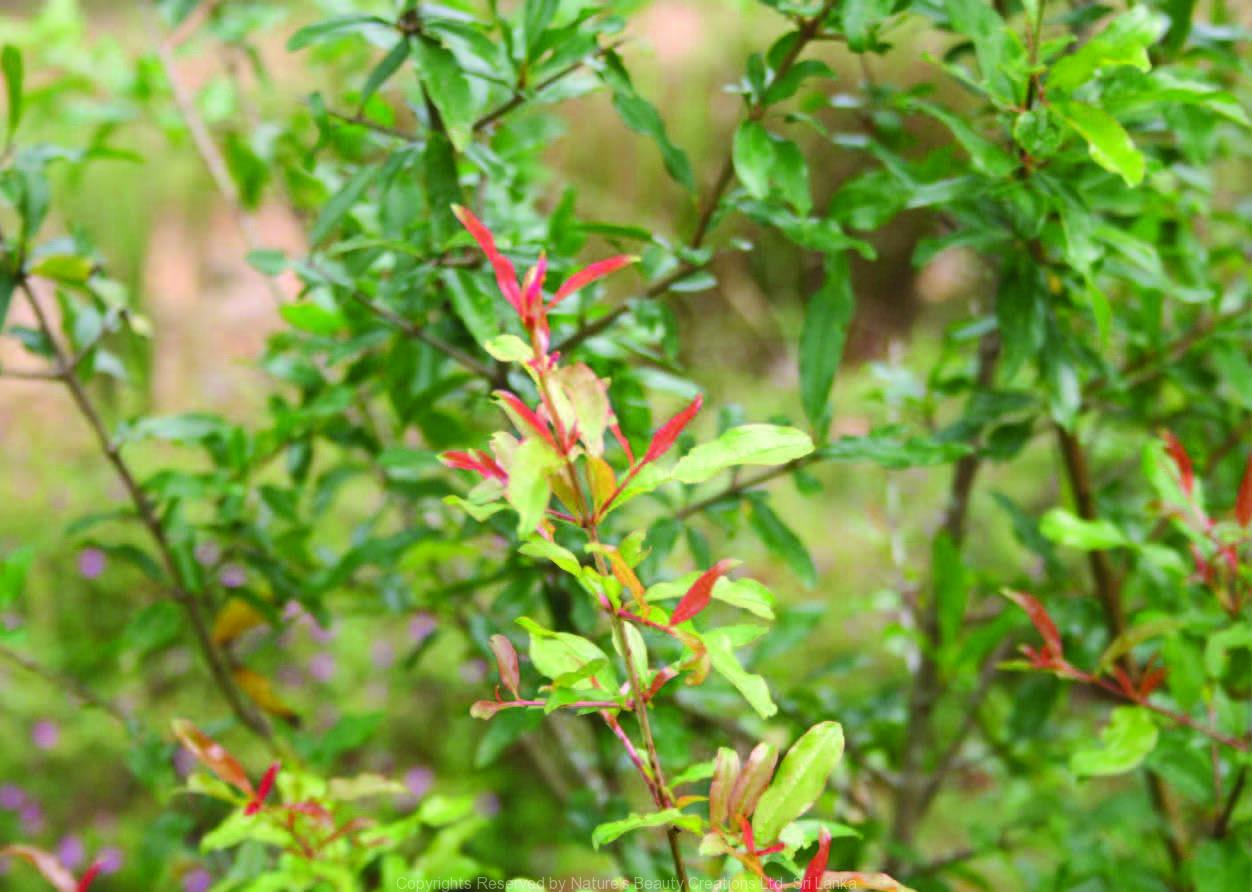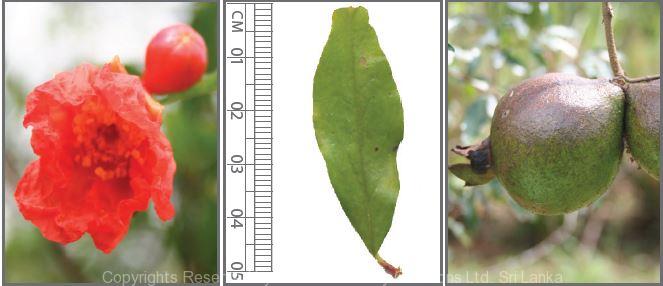

Traditional Knowledge
Useful plant parts :
Fruit and stem bark
Uses in traditional medicine :
- Decoction of the stem bark is taken to control parasitic nematodes in the stomach
- Infusion of the fruit rind is prescribed to cure diarrhoea in children
- Acts as an anthelmintic and diuretic
- Used in the treatment for tuberculosis, eye diseases, painful micturition, catarrh and dysentery
Scientific Research
Chemical constituents:
Ellagitannins: punicalagin, corilagin, granatin B, punicafolin, phenolic compounds: gallic acid, brevifolin carboxylic acid and brevifolin, anthocyanins: pelargonidin-3-galactose, cyanidin-3-glucose, flavonoids: quercetin, myricetin from leaves and fruits; estrogenic hormone: estrone, isoflavone phytoestrogens: genistein, daidzein and phytoestrogen coumestrol from dried seeds
Bioactivity :
Methanol extract of fruit peel and seeds: antioxidative; methanol extract of fruits: antibacterial; seed juice extract: active against cardiotoxicity; fruit juice: antiatherogenic, antiproliferative, apoptotic against cancer cell lines
Clinical:
Fruit juice displays antiatherogenic effects in healthy humans
References : Aviram, M. et al., (2000), Pomegranate juice consumption reduces oxidative stress, atherogenic modifications to LDL, and platelet aggregation: studies in humans and in atherosclerotic apolipoprotein E–deficient mice, The American Journal of Clinical Nutrition, 71, 1062–76. Kho, Y. L. et al., (2010), Identification of estrone in pomegranate (Punica granatum) extracts by liquid chromatography-tandem mass spectrometry, Food Science and Biotechnology, 19(3), 809-813. Kim, N. D. et al., (2002), Chemopreventive and adjuvant therapeutic potential of pomegranate (Punica granatum) for human breast cancer, Breast Cancer Research and Treatment, 71, 203–217. Lansky, E. P. and Newman, R. A., (2007), Punica granatum (pomegranate) and its potential for prevention and treatment of inflamma- tion and cancer, Journal of Ethnopharmacology, 109, 177–206. Mahan, M. et al., (2010), Cardioprotective potential of Punica granatum extract in isoproterenol-induced myocardial infarction in Wistar rats, Journal of Pharmacology and Pharmacotherapeutics, 1(1), 32-37. Nawwar, M. A. M. et al., (1994), NMR spectral analysis of polyphenols from Punica granatum, The International Journal of Plant Biochemistry, 36(3), 793–798. Naz, S. et al., (2007), Antibacterial Activity Directed Isolation of Compounds from Punica granatum, Journal of food science, 72(9), 341-345. Prashanth, D. et al., (2001), Antibacterial activity of Punica granatum, Fitoterapia, 72, 171-173. Seeram, N. P. et al., (2005), In vitro antiproliferative, apoptotic and antioxidant activities of punicalagin, ellagic acid and a total pomegranate tannin extract are enhanced in combination with other polyphenols as found in pomegranate juice, Journal of Nutritional Biochemistry, 16, 360– 367. Singh, R. P. et al., (2002), Studies on the Antioxidant Activity of Pomegranate (Punica granatum) Peel and Seed Extracts Using in Vitro Models, Journal of Agricultural and Food Chemistry, 50, 81-86. Sharaf, A. and Nigam, S. A. R., (1964), The oestrogenic activity of promagranate seed oil, Journal of endocrinology, 29, 91-92.
Copyrights Reserved By
Natures Beauty Creations




